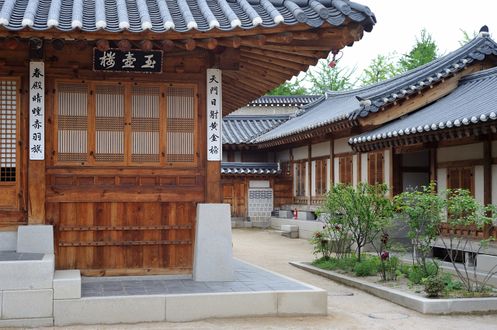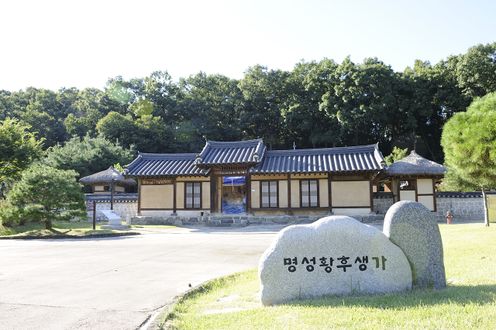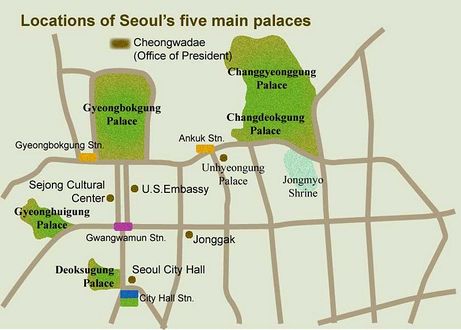"The Assassination of Empress Myeongseong"의 두 판 사이의 차이
(새 문서: {{Kor Article| |Article= }} <gallery mode=packed heights=220px> </gallery> <gallery mode=packed heights=220px> </gallery> =='''Related Articles'''== *[[]] =='''References'''== <re...) |
|||
| (같은 사용자의 중간 판 4개는 보이지 않습니다) | |||
| 1번째 줄: | 1번째 줄: | ||
{{Kor Article| | {{Kor Article| | ||
| − | |Article= | + | |Article=일본, 조선의 황후를 살해하다 |
}} | }} | ||
| + | Numerous incidents occured during [[King Gojong (Joseon)|Gojong]]'s tenure as the 26th king of the [[Joseon]] Dynasty (r.1863-97) and the first emperor of the [[Korean Empire]] (r.1897-1907). These include the opening of Joseon's ports, efforts to strengthen economic and military power for independence, and the assassination of Gojong's wife, [[Empress Myeongseong (Joseon)|Queen Min]], in a conspiracy by the Japanese. | ||
| + | |||
| + | Called the "Incident of 1895," the brutal assassination of the queen was an outcome of a complicated collision of powers. As the influence of China's [[Qing China|Qing Dynasty]] had increased, modernization advocates held a coup in resistance to Chinese intervention. Based on the Tianjin Treaty between Japan and Qing, Japanese and Qing troops entered Korean peninsula when the [[Donghak Peasant War]] threatened the kingdom in 1894. This was followed by a war between China and Japan, and Russia, Germany and France further meddled in the situation to prevent Japan’s expansion. | ||
| + | |||
| + | As a pro-Russian cabinet was formed in Joseon, Japan found the removal of Queen Min a necessity as she was regarded to be the core supporter. Therefore, she was brutally assassinated and burned on the night of August 20, 1895 at Okhoru Pavilion in [[Gyeongbokgung Palace]], by Japanese thugs disguised as rioters. In view of the unfavorable relations between her and her father-in-law, [[Heungseon Daewongun (Joseon)|Heungseon Daewongun]], Japan plotted to place him in the position of the mastermind of the whole scenario. | ||
| + | |||
| + | Japan first claimed that its government had no connection with the incident. But it many witnesses revealed that the group of people who plotted and executed the assassination were not simple rioters, but Japanese intellectuals, including Japanese diplomats, the president of a newspaper company, and an advisor of Japanese army; therefore Japan failed in concealing and deflecting responsibility for the criminal incident. | ||
| + | |||
| + | Various court people and foreign witnesses exposed the truth of the incident to diplomats of their respective countries. American Acting Minister [[Horace N. Allen]] and Russian Minister [[Karl Weber]] announced their conviction on the involvement of the Japanese government. Embarrassed by this development, Japan hurriedly arrested some Japanese "rioters" and took them to Japan. Some 40 suspected individuals were put to trial, including Minister [[Miura]] in Japan, but all of them were released after being acquitted for insufficient evidence. Due to political instability, an official funeral service for Queen Min, who was posthumously evelvated to the title of Empress Myeongseong upon the establishment of the Korean Empire in 1897, was held two years after her death. | ||
<gallery mode=packed heights=220px> | <gallery mode=packed heights=220px> | ||
| + | File:4-7.옥호루-DSC_6484.jpg|Okhoru Pavilion in Gyeongbokgung Palace where Empress Myeongseong was assasinated by the Japanese (Sajik-ro, Jongno-gu, Seoul) | ||
| + | File:4-7.명성황후 생가-_GSC9682.jpg|The birthplace of Empress Myeongseong, Gojong's wife (Neunghyeon-ri, Yeoju-eup, Yeoju-gun, Gyeonggi-do) | ||
</gallery> | </gallery> | ||
<gallery mode=packed heights=220px> | <gallery mode=packed heights=220px> | ||
| + | File:046(E).jpg|Locations of Seoul's Main Palaces | ||
</gallery> | </gallery> | ||
=='''Related Articles'''== | =='''Related Articles'''== | ||
| − | *[[]] | + | *[[The Country of the Eastern Noblemen - Joseon]] |
| + | *[[A New Imperial Nation is Proclaimed - The Korean Empire]] | ||
| + | *[[Sino-Japanese and Russo-Japanese Wars: Foreign Powers Making the Korean Peninsula their Battleground]] | ||
| + | *[[Empress Myeongseong (Joseon)]] | ||
| + | *[[King Gojong (Joseon)]] | ||
| + | *[[Heungseon Daewongun (Joseon)]] | ||
| + | *[[Horace N. Allen]] | ||
| + | *[[Karl Weber]] | ||
| + | *[[Miura]] | ||
| + | *[[Donghak Peasant War]] | ||
| + | *[[Gyeongbokgung Palace]] | ||
| + | *[[Qing China]] | ||
| + | *[[Joseon]] | ||
| + | *[[Korean Empire]] | ||
=='''References'''== | =='''References'''== | ||
2017년 11월 29일 (수) 12:33 기준 최신판
Numerous incidents occured during Gojong's tenure as the 26th king of the Joseon Dynasty (r.1863-97) and the first emperor of the Korean Empire (r.1897-1907). These include the opening of Joseon's ports, efforts to strengthen economic and military power for independence, and the assassination of Gojong's wife, Queen Min, in a conspiracy by the Japanese.
Called the "Incident of 1895," the brutal assassination of the queen was an outcome of a complicated collision of powers. As the influence of China's Qing Dynasty had increased, modernization advocates held a coup in resistance to Chinese intervention. Based on the Tianjin Treaty between Japan and Qing, Japanese and Qing troops entered Korean peninsula when the Donghak Peasant War threatened the kingdom in 1894. This was followed by a war between China and Japan, and Russia, Germany and France further meddled in the situation to prevent Japan’s expansion.
As a pro-Russian cabinet was formed in Joseon, Japan found the removal of Queen Min a necessity as she was regarded to be the core supporter. Therefore, she was brutally assassinated and burned on the night of August 20, 1895 at Okhoru Pavilion in Gyeongbokgung Palace, by Japanese thugs disguised as rioters. In view of the unfavorable relations between her and her father-in-law, Heungseon Daewongun, Japan plotted to place him in the position of the mastermind of the whole scenario.
Japan first claimed that its government had no connection with the incident. But it many witnesses revealed that the group of people who plotted and executed the assassination were not simple rioters, but Japanese intellectuals, including Japanese diplomats, the president of a newspaper company, and an advisor of Japanese army; therefore Japan failed in concealing and deflecting responsibility for the criminal incident.
Various court people and foreign witnesses exposed the truth of the incident to diplomats of their respective countries. American Acting Minister Horace N. Allen and Russian Minister Karl Weber announced their conviction on the involvement of the Japanese government. Embarrassed by this development, Japan hurriedly arrested some Japanese "rioters" and took them to Japan. Some 40 suspected individuals were put to trial, including Minister Miura in Japan, but all of them were released after being acquitted for insufficient evidence. Due to political instability, an official funeral service for Queen Min, who was posthumously evelvated to the title of Empress Myeongseong upon the establishment of the Korean Empire in 1897, was held two years after her death.
Related Articles
- The Country of the Eastern Noblemen - Joseon
- A New Imperial Nation is Proclaimed - The Korean Empire
- Sino-Japanese and Russo-Japanese Wars: Foreign Powers Making the Korean Peninsula their Battleground
- Empress Myeongseong (Joseon)
- King Gojong (Joseon)
- Heungseon Daewongun (Joseon)
- Horace N. Allen
- Karl Weber
- Miura
- Donghak Peasant War
- Gyeongbokgung Palace
- Qing China
- Joseon
- Korean Empire


